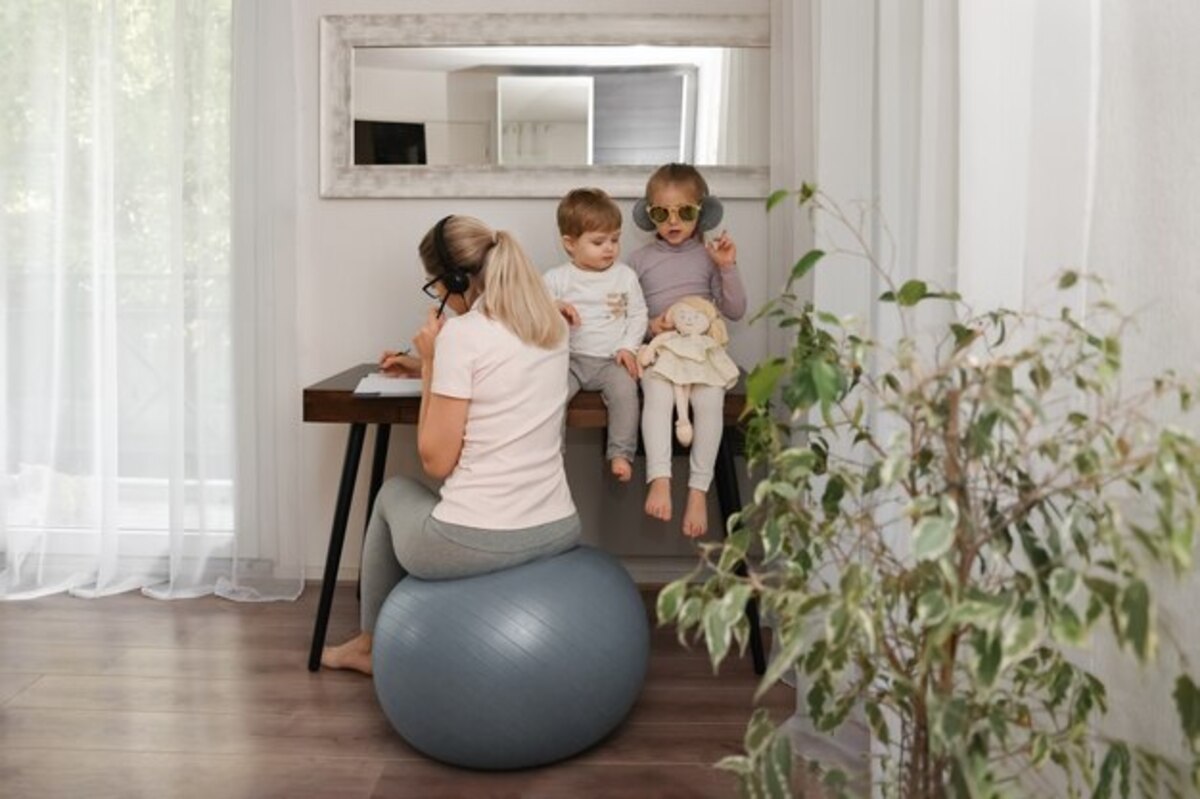Spaces that nurture emotional well-being in the family

Spaces that nurture emotional well-being in the family are essential for cultivating strong and harmonious relationships. In this article, we will explore how every corner of your home can become a refuge that fosters connection, communication, and family happiness. From resting areas to play spaces, you will discover practical tips for designing environments that support the emotional well-being of all household members. Transform your home into a place where every day celebrates togetherness!
1. The importance of natural lighting in the home
Natural light is a vital element in any home, as it not only affects the aesthetics of the spaces but also has a significant impact on the emotional well-being of its inhabitants. Sunlight helps regulate our circadian rhythm, which in turn influences our energy levels and mood. By allowing natural light to flood the rooms, we create a warm and inviting environment that fosters joy and connection among family members. Additionally, exposure to sunlight stimulates the production of serotonin, known as the "happiness hormone," thus contributing to a more positive environment.
Incorporating architectural elements such as large windows or skylights can radically transform a space, making it brighter and more appealing. Likewise, it is important to consider the arrangement of furniture to maximize access to this natural light; placing furniture away from the windows will allow every corner to receive its fair share of sunlight. When designing spaces with natural lighting in mind, not only is a more cheerful atmosphere promoted, but moments shared with family under that revitalizing light are also encouraged. A home that is well-lit naturally not only feels more spacious and inviting but also nurtures emotional well-being and strengthens family bonds.
2. Multifunctional furniture: comfort and functionality
Multifunctional furniture has become an indispensable ally in creating spaces that promote emotional well-being in the family. These elements not only optimize space usage but also provide practical solutions to adapt to the various activities and needs of household members. A sofa bed, for example, can transform from a cozy spot for family movie watching during the day to a comfortable bed at night, facilitating moments of closeness and rest without sacrificing usable area. This type of furniture helps keep the home organized and clutter-free, contributing to a more relaxing environment conducive to family connection.
The versatility of multifunctional furniture also extends to areas like the kitchen or dining room, where extendable tables or stackable chairs can facilitate both everyday family gatherings and special celebrations. By choosing pieces that adapt to different contexts, we foster a dynamic environment where every member can participate and enjoy together. Furthermore, by incorporating these elements into our home, we promote a culture of collaboration and creativity among all family members, encouraging them to find new ways to coexist and share meaningful moments.
3. Relaxation spaces: corners to meditate and disconnect
Relaxation spaces are essential for emotional well-being, as they provide a refuge where each family member can disconnect and recharge. By creating corners dedicated to meditation or reading, an environment conducive to introspection and rest is fostered. Consider including elements such as comfortable cushions, soft blankets, and dim lighting that invites tranquility. A corner with plants or natural elements can also enhance the feeling of peace, helping everyone to distance themselves from daily stress and reconnect with themselves.
To maximize the effect of these spaces, it is important to establish a family routine that includes moments of joint relaxation. Whether practicing yoga as a family, sharing books, or simply enjoying silence, these rituals can strengthen emotional bonds and provide a sense of community within the home. Moreover, by reserving time for these activities in an environment specifically designed for it, not only is individual well-being promoted, but a space is also cultivated where emotions can flow freely and where each person feels seen and heard.
4. The magic of colors: how they influence our emotions
Colors have a profound impact on our emotions and can completely transform the atmosphere of a space. When choosing a palette for your home, consider how each hue can influence your family's mood. For example, blue and green tones are associated with calmness and tranquility, making them ideal options for bedrooms or meditation areas. On the other hand, warm colors like yellow and orange promote energy and creativity, perfect for kitchens or playrooms where the goal is to stimulate interaction and family dynamism.
In addition to their psychological effect, colors can also evoke memories and shared experiences that strengthen family bonds. Walls painted in soft tones can remind us of happy moments from the past, thus creating a welcoming atmosphere that invites everyone to relax and enjoy time together. Incorporating decorative elements in meaningful or well-used colors can be an effective way to personalize every corner of the home, making each member feel represented and valued within the shared space. Therefore, by paying attention to the magic of colors, you not only beautify your home but also nurture the positive emotions that foster a harmonious family environment.
5. Family gathering areas: design of welcoming common spaces
Family gathering areas are the heart of any home, where memories are created and bonds between members are strengthened. To design cozy common areas, it is essential to consider the arrangement of furniture and decorative elements that invite interaction. Comfortable sofas and chairs arranged in a circle encourage conversation, while large tables can be the perfect setting for sharing meals or family games. Additionally, incorporating elements like colorful cushions, soft blankets, and warm lighting can transform any space into a refuge that promotes closeness and emotional well-being.
The choice of colors also plays a crucial role in creating a welcoming atmosphere. Soft and natural tones can help generate a sense of calm and relaxation, while more vibrant accents can add energy to the space. Don't forget to integrate plants or natural elements; they not only purify the air but also bring vitality and connection to the surroundings. With small personalized decorative touches, such as family photos or shared memories, you can make every corner a reflection of your family story, inviting everyone to share valuable moments together in an environment full of love and warmth.
6. Integrating nature: plants that enhance mood
Integrating nature into our home not only beautifies the spaces but also significantly contributes to the emotional well-being of the family. Plants have a special power to uplift spirits and create a positive environment. Studies have shown that the presence of greenery can reduce stress, improve concentration, and even increase creativity. Including varieties such as succulents, ferns, or low-maintenance indoor plants can facilitate this connection with nature, turning every corner into a small oasis of serenity.
In addition to their aesthetic and emotional benefits, plants offer a unique opportunity to foster family bonds through shared care. Taking on the responsibility of keeping them alive and healthy together can be an enriching activity that promotes communication and teamwork among household members. From choosing the right pots to learning about their watering and growth, these experiences can create valuable moments of learning and emotional connection, transforming any space into a place where both plants and family relationships can flourish.
7. Creative activities at home: fostering connections through art
Creative activities at home are an excellent way to strengthen family bonds and encourage communication. By spending time doing crafts, painting, or even making music together, not only is creativity stimulated, but memorable moments are also created that nurture the emotional well-being of each member. These creative spaces can be designed to be comfortable and accessible, whether in a corner of the living room with materials on hand or in a dedicated room where everyone can express themselves freely. Collaborating on artistic projects helps develop social and emotional skills by learning to listen to others' ideas and valuing different perspectives.
Involving children in artistic activities can be an effective way to teach them about emotional expression. By allowing them to express their feelings on paper or through other forms of art, they are given a safe outlet to share what they feel. This not only boosts their self-esteem by seeing their creations valued by the rest of the family, but it also establishes an environment where everyone can feel heard and understood. Thus, creative activities not only foster bonds among family members but also lay the groundwork for open and honest communication that will endure over time.
8. Outdoor spaces: the positive impact of the outdoors on the family
Outdoor spaces are a key element in creating a healthy and balanced family environment. The connection with nature has a positive impact on emotional well-being, promoting not only relaxation but also creativity and play. When designing a garden, a terrace, or even a small balcony, it provides each family member with the opportunity to disconnect from daily stress and enjoy quality moments together. Organizing outdoor activities, such as picnics or movie nights under the stars, can strengthen family bonds while fostering open and honest communication.
Moreover, outdoor spaces encourage physical activities that benefit both the body and the mind. Whether through gardening, exercising outdoors, or family games, these shared experiences not only improve overall fitness but also create lasting memories that enrich emotional bonds. Incorporating elements like walking trails, playground areas, or simply quiet corners for reading can transform any outdoor space into a sanctuary where positive interactions flourish. Thus, making use of these spaces not only nurtures individual emotional well-being but also creates a family atmosphere filled with love and joy.



